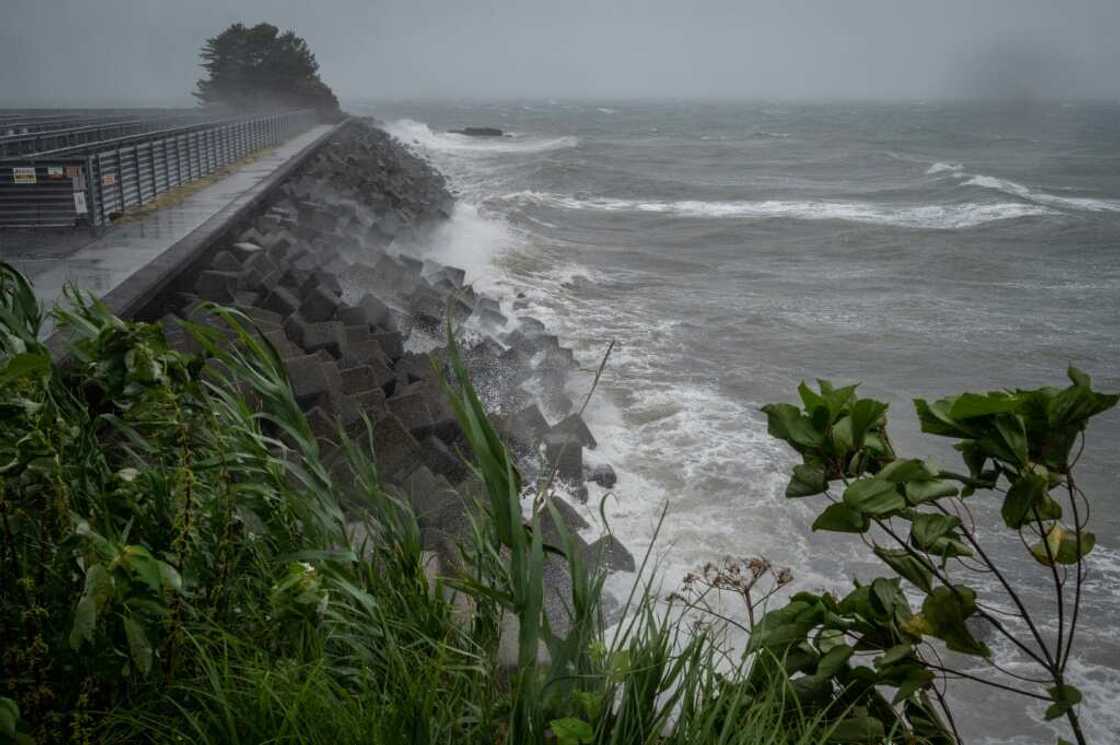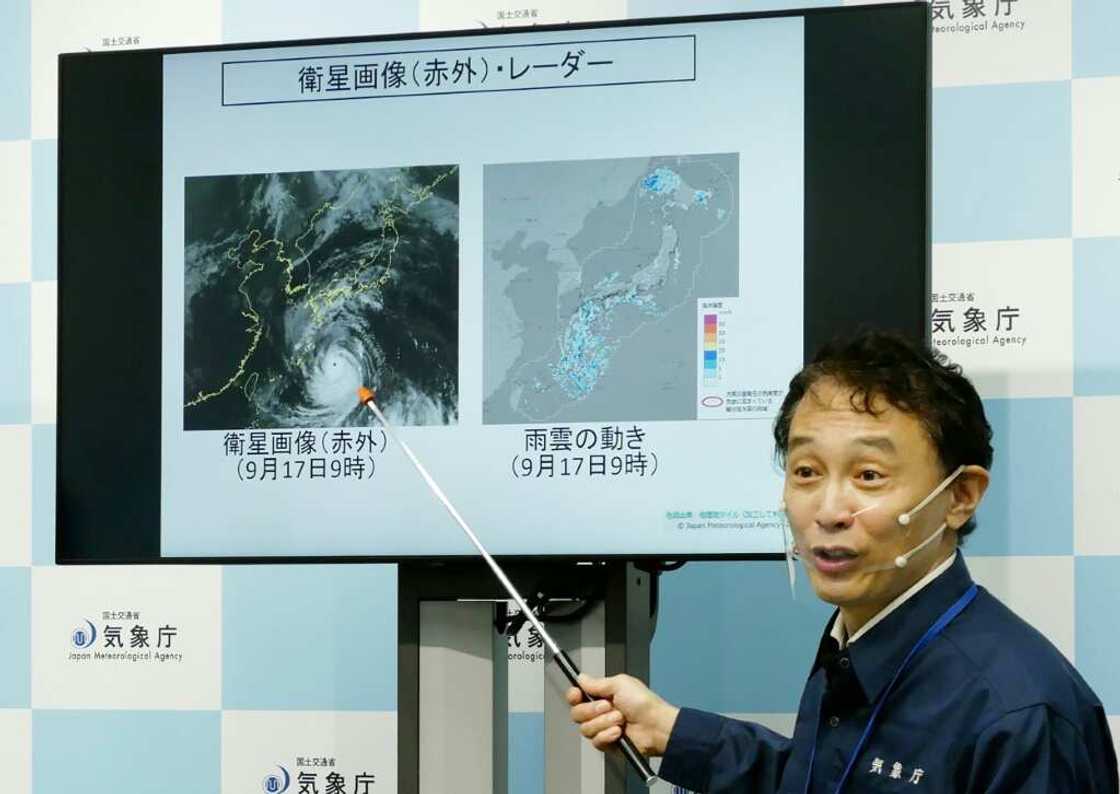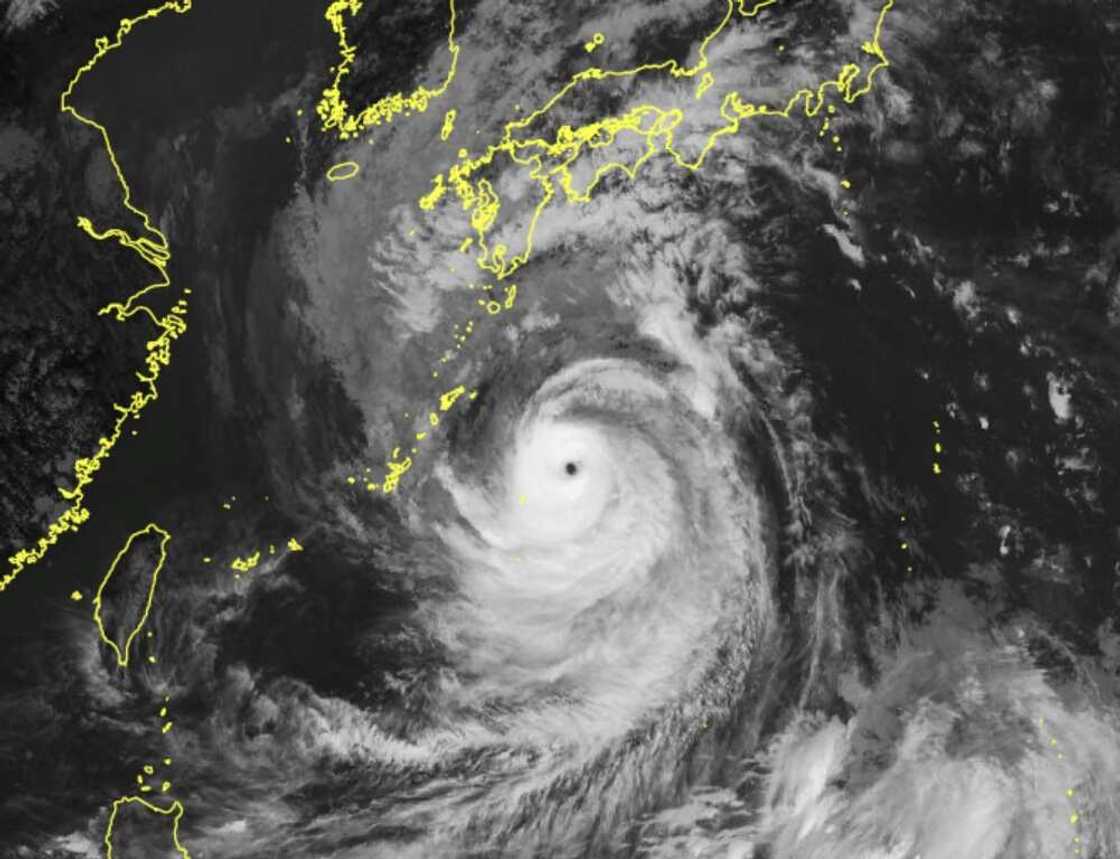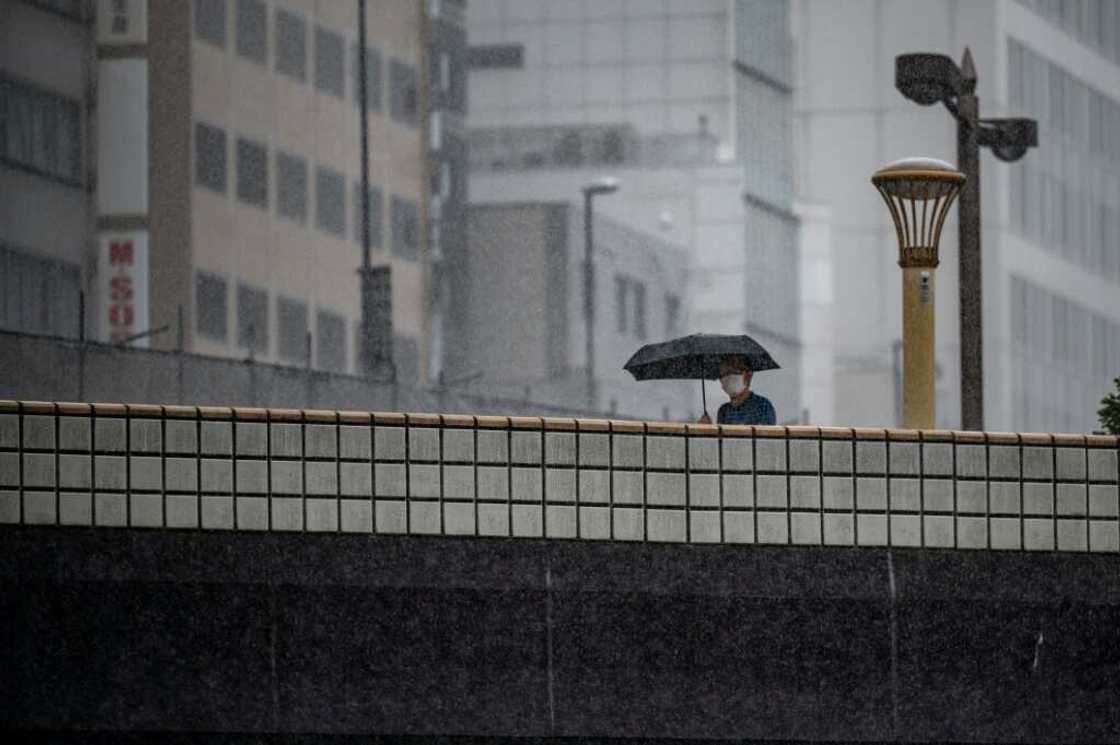Thousands in shelters as 'dangerous' typhoon hits Japan

Source: AFP
PAY ATTENTION: Click “See First” under the “Following” tab to see Legit.ng News on your Facebook News Feed!
Thousands of people took refuge in shelters in southwestern Japan on Sunday as powerful Typhoon Nanmadol churned towards the region, prompting authorities to urge over four million residents to evacuate.
The Japan Meteorological Agency (JMA) has issued a rare "special warning" for the Kagoshima and Miyazaki regions in Kyushu prefecture -- an alert that is issued only when it forecasts conditions seen once in several decades.
By Sunday morning, heavy rain and high winds lashed the area on Japan's southern island, with nearly 98,000 households in Kagoshima, Kumamoto, Nagasaki and Miyazaki already without power.
Trains, flights and ferry runs were cancelled until the passage of the storm, and even some convenience stores -- generally open all hours and considered a lifeline in disasters -- were shutting their doors.
"Please stay away from dangerous places, and please evacuate if you feel even the slightest hint of danger," Prime Minister Fumio Kishida tweeted after convening a government meeting on the storm.
"It will be dangerous to evacuate at night. Please move to safety while it's still light outside," he added.
PAY ATTENTION: Share your outstanding story with our editors! Please reach us through info@corp.legit.ng!
The JMA has warned the region could face "unprecedented" danger from high winds, storm surges and torrential rain.
"Maximum caution is required," Ryuta Kurora, head of the JMA's forecast unit said on Saturday.
"It's a very dangerous typhoon."
"The wind will be so fierce that some houses might collapse," Kurora told reporters, also warning of flooding and landslides.

Source: AFP
National broadcaster NHK, which collates local warnings, said more than four million people across Kyushu were issued evacuation warnings, with officials in Kagoshima and Miyazaki saying over 15,000 people were in local shelters by Sunday afternoon.
The evacuation warnings call on people to move to shelters or alternative accommodation that can withstand extreme weather.
But they are not mandatory, and during past extreme weather events authorities have struggled to convince residents to take shelter quickly enough.
Kurora urged people to evacuate before the worst of the storm arrived and warned that even in sturdy buildings residents would need to take precautions.
"Please move into sturdy buildings before violent winds start to blow and stay away from windows even inside sturdy buildings," he told a late-night press conference.
'Highest caution possible'
By Sunday morning, bullet train operations in the area were halted, and NHK said hundreds of flights had been cancelled.

Source: AFP
"The southern part of the Kyushu region may see the sort of violent wind, high waves and high tides that have never been experienced before," the JMA said Sunday, urging residents to exercise "the highest caution possible".
On the ground, an official in Kagoshima's Izumi city said conditions were deteriorating rapidly.
"The wind has become extremely strong. Rain is falling hard too," he told AFP. "It's a total white-out outside. Visibility is almost zero."
On the coast in Kyushu's Minamata city, fishing boats tied up for safety bobbed on the waves, as spray from the sea and bands of rain sluiced the boardwalk.
As of 1 pm (0400 GMT), the typhoon was located above tiny Yakushima island, packing gusts up to 234 kilometres (146 miles) per hour.
It is expected to make landfall in Kyushu on Sunday evening, before turning northeast and sweeping up across Japan's main island through early Wednesday.
Japan is currently in typhoon season and faces around 20 such storms a year, routinely seeing heavy rains that cause landslides or flash floods.

Source: AFP
In 2019, Typhoon Hagibis smashed into Japan as it hosted the Rugby World Cup, claiming the lives of more than 100 people.
A year earlier, Typhoon Jebi shut down Kansai Airport in Osaka, killing 14 people.
And in 2018, floods and landslides killed more than 200 people in western Japan during the country's annual rainy season.
Scientists say climate change is increasing the severity of storms and causing extreme weather such as heat waves, droughts and flash floods to become more frequent and intense.
Source: AFP





